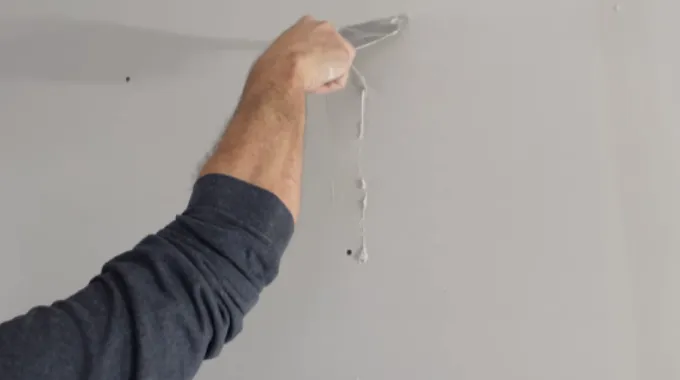Last Updated on March 22, 2023
Home renovations can be a daunting task. But it all starts with the right materials. Choosing the right materials for a home renovation is no easy feat. One question that often arises is whether drywall mud will stick to oil-based paint or not.
The answer isn’t simple: different compounds, porosities, and viscosity levels make this choice more complicated than expected.
Drywall mud and oil-based paint are mismatched since one is based on calcium carbonate while the other contains polymers and resins. Plus, their different levels of porosity, as well as viscosity, low for drywall mud but much higher for oil-based paint. Meaning that no adhesive bond can form between them.
We’ll discuss the complexities of drywall mud adhesion to oil-based paint, why it’s so difficult, and possible solutions that may help you in your home renovation project. Learn more about how to identify suitable materials for your home renovation project and ensure a successful outcome.
Reasons Why Drywall Mud Will Not Stick to Oil-Based Paint

Chemical Composition Differences
1. Drywall Mud is a Calcium Carbonate Compound
Drywall mud, also known as joint compound or drywall paste, is an adhesive made of a variety of compounds and ingredients that are mixed together to form a putty-like substance.
The primary ingredient in drywall mud is calcium carbonate which acts as the bonding agent. This calcium carbonate binds with other compounds, such as gypsum and ground limestone, to form a thick paste that adheres to the surface during application.
Other ingredients in drywall mud include talc powder for improved adhesion, along with other additives like silica and even mica, for enhanced strength and durability. These properties make it ideal for filling in gaps between drywall panels or patching holes and cracks.
2. Oil-Based Paint Contains Polymers and Resins
Oil-based paints are formulated differently than that drywall mud. This type of paint typically contains a combination of resins, solvents, binders, pigments, dyes, fillers, and other additives that give it unique properties.
The main component within oil-based paints are polymers which act as the protective coating against water damage and UV rays from the sun. These polymers help protect your surfaces by creating an impermeable layer on top of them while also giving the paint its distinctive glossy finish.
Oil-based paints come in a wide range of colors, so you can find something to fit your style perfectly.
3. No Adhesive Bond Between these Compounds
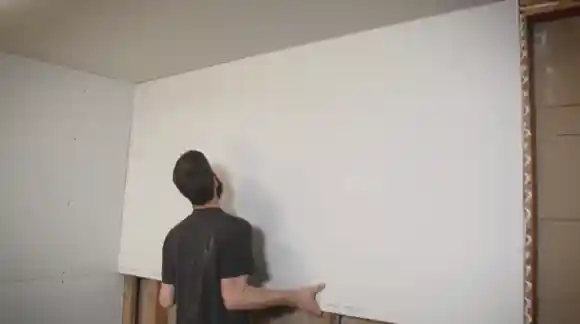
Although both substances can be used together, they do not have an adhesive bond between them due to their differing chemical compositions.
The polymer resins in oil-based paints cannot chemically react with the calcium carbonate in drywall mud. This means that although they will stick together initially, any vibration or movement could cause them to come apart over time as gravity takes hold.
For this reason, it is recommended when using either product next to each other to use a sealant such as caulk or spackling paste around the edges where they meet to ensure their longevity over time.
Different Levels of Porosity
1. Drywall Mud is Highly Absorbent and Porous
Drywall mud is an ideal material for joining two pieces of drywall together. It is porous in nature, meaning that it can absorb water and other liquids. This makes it an excellent choice for applications such as moisture protection and soundproofing in walls.
As a result of its highly absorbent nature, drywall mud can be easily spread on a wall to create a smooth surface with no noticeable joints between the pieces of drywall.
The porosity of drywall mud also allows it to act like a sponge, trapping air bubbles and making the wall more resistant to sound waves and moisture penetration.
2. Oil Based Paint is Not as Porous as Drywall Mud
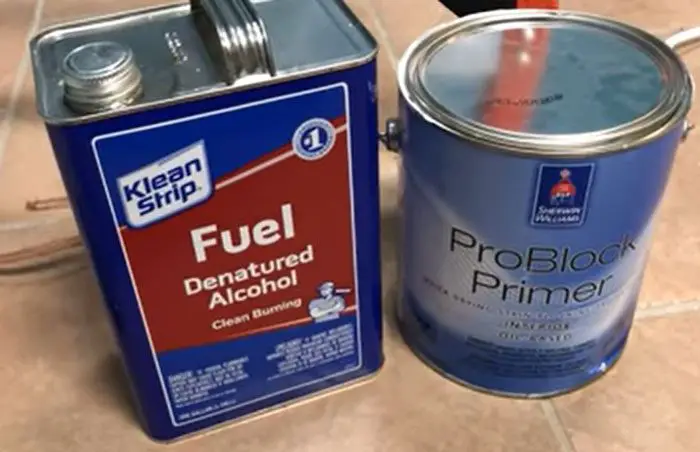
While oil-based paints are often used to cover drywall mud, they are not nearly as porous as the drywall mud itself. Oil-based paints form an impermeable seal over the surface they are applied to.
While they can still provide some level of soundproofing or moisture protection, they are not nearly as effective at absorbing water or other liquids. Oil-based paints also have a much lower tendency to trap air bubbles when applied.
Because of this, oil-based paints do not offer the same level of air resistance compared to their drywall counterpart. Oil-based paint does not allow moisture to pass through its film, which can lead to mold growth if left unchecked. Drywall mud does not typically cause this issue.
Problems with Bonding
1. Impact on Adhesion of the Drywall Mud
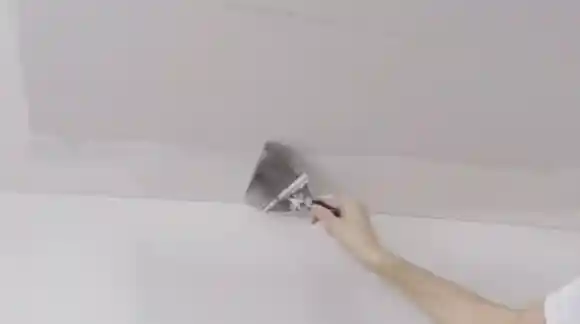
One of the major problems with drywall mud adhering to oil-based surfaces is that it has poor adhesion. This is because drywall mud does not contain a strong adhesive that can bond to the slick, greasy surface of oil-based paints.
As a result, when applying drywall mud to an oil-based painted surface, the mortar often fails to adhere properly and will instead start to crumble or crack over time. To prevent this from happening, some adhesive must be applied before the drywall mud can be used to create a stronger bond between the two materials.
This is especially important if you are planning on hanging something heavy such as tile or plasterboard, because the extra weight could cause your mortar and paint bond to weaken over time.
2. Effectiveness of Primers and Sealers in the Bonding Process
Another problem with bonding drywall mud with oil-based paints is that not all primers and sealers are effective in creating a strong bond between them. While some products may claim to help create a better bond between these materials, others may not be suitable for use with certain types of paints.
Additionally, even if you find a primer that works well with your particular type of paint, it may still not be enough on its own to provide a sufficient bond for your project.
To get around this issue, it’s recommended to use additional products such as epoxy glue or polyurethane foam insulation along with your primer and sealer for added strength and longevity when bonding them together.
Effects on Performance and Durability
1. Failure of the Bonding Process Leads to Poor Performance and Lack of Durability for the Finished Surface
The failure of the bonding process between drywall mud and oil-based paint can have a negative effect on the performance and durability of the finished surface. When drywall mud is applied to oil-based paint, it has a difficult time gripping and adhering properly, making it prone to cracking, flaking, or peeling away over time.
This can eventually lead to further damage, such as sagging or buckling walls, water seepage through the cracks in the wall layers, and even mold growth due to dampness.
The use of a wrong adhesive or an unbalanced mixture of components will decrease its ability to hold up against normal wear and tear. Furthermore, any pressure load or movement against the wall could cause further weakening.
All these problems have a major impact on both the durability and performance of the finished surface in terms of aesthetics as well as functionality.
2. Need for Proper Selection & Combination of Materials for Optimum Efficiency & Quality Results
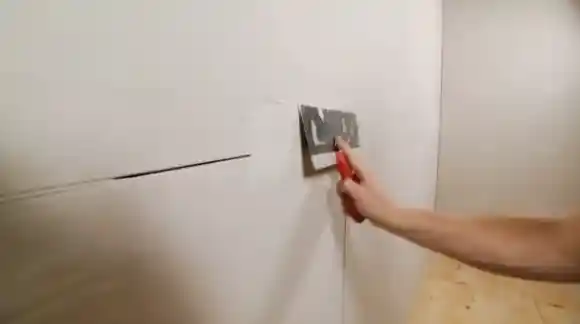
In order to achieve optimum efficiency and quality results when sticking drywall mud to oil-based paint, it is essential to carefully select and combine the right materials according to their intended purpose.
For instance, using plasterboard tape rather than paper tape will provide greater strength for wall panels. Then this should be chosen accordingly for better results. Similarly, using appropriate adhesives like those designed specifically for plasterboard will help ensure proper bonding between the two surfaces.
In addition, selecting appropriate joint compounds, such as lightweight all-purpose compounds that are suitable for interior applications, will result in improved performance over time without compromising on quality results from finishing products such as sealants or paints applied over them.
How Many Coats Of Paint Do I Need To Cover Drywall Mud?
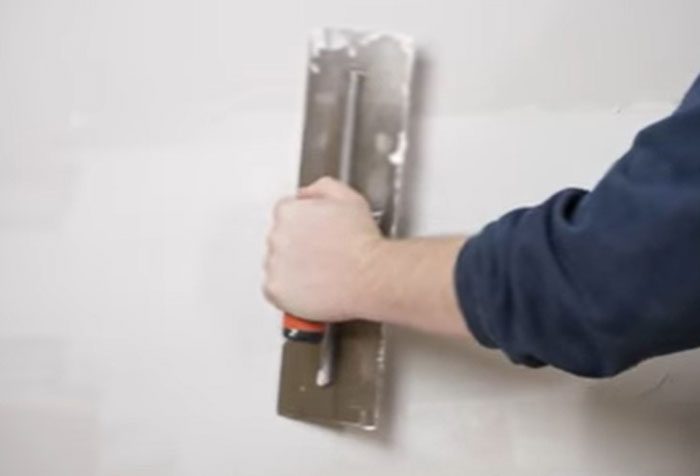
Generally, two coats of paint are sufficient to cover drywall mud. The first coat should be applied in a thin layer in order to allow the second coat to adhere better.
You may need additional coats if the color or texture of the mud is not covered well. If you are looking for a more polished finish, you may want to consider an additional third coat.
Be sure to allow adequate drying time between each coat as well as any sanding that might be required after each coat.
Should I Prime Before Applying Joint Compounds?
Priming before applying joint compound is generally recommended for optimal results. Primer will help ensure better adhesion of the joint compound and make it easier to sand down afterward.
It also helps seal any pores or cracks in the drywall that could affect the look and finish of your project after painting. Primer will also create a barrier between your drywall mud and the paint, making sure that any water or moisture that gets behind the paint won’t affect the mud beneath it.
How Many Coats Of Primer Do You Need For Drywall Mud?

Typically only one coat of primer is needed when using drywall mud. Make sure to pick a primer specifically designed for use with the drywall, as this will ensure good adhesion between layers and prevent peeling down the line.
Allow adequate drying times between applications according to product instructions and lightly sand any imperfections prior to applying paint for best results.
How Can You Tell If The Paint Is Oil Or Water-Based?

Oil-based paints tend to have a strong odor compared with water-based paints, which usually have little or no odor at all. Another way to tell them apart is by checking if there are instructions on the label about ventilation during use.
Oil-based products usually require some kind of ventilation, while water-based typically do not mention it at all. The last difference is that oil-based paints take significantly longer than water-based ones do before they become touch-dry and fully cured.
Be sure to check product instructions before moving on with your project accordingly.
Do You Have To Prime Over Oil-Based Paint?
Yes, primers should always be used when painting over pre-existing oil-based paints since these paints don’t bond easily with other materials without proper preparation beforehand.
Primers specifically made for use over oil-based paints help create better adhesion while providing extra protection against moisture damage down the line as well as helping block odors from escaping through porous surfaces such as wood or brick walls that might have been previously painted with an oil-based product.
A Final Note
Ultimately, due to their different chemical compositions, varying levels of porosity, and inverse viscosities, oil-based paint won’t adhere to drywall mud no matter what you do.
Without an adhesive bond forming between them due to their incompatible components, nor an adequate level of porosity allowing absorption into one another’s surfaces. There will always be a lack of interaction present, which ultimately prevents any kind of adhesion or bonding from occurring.
Knowing this ahead of time can help save you time and money in your home renovation projects so that you can choose materials that are compatible with one another without having to worry about whether or not they’ll adhere together properly afterward.
